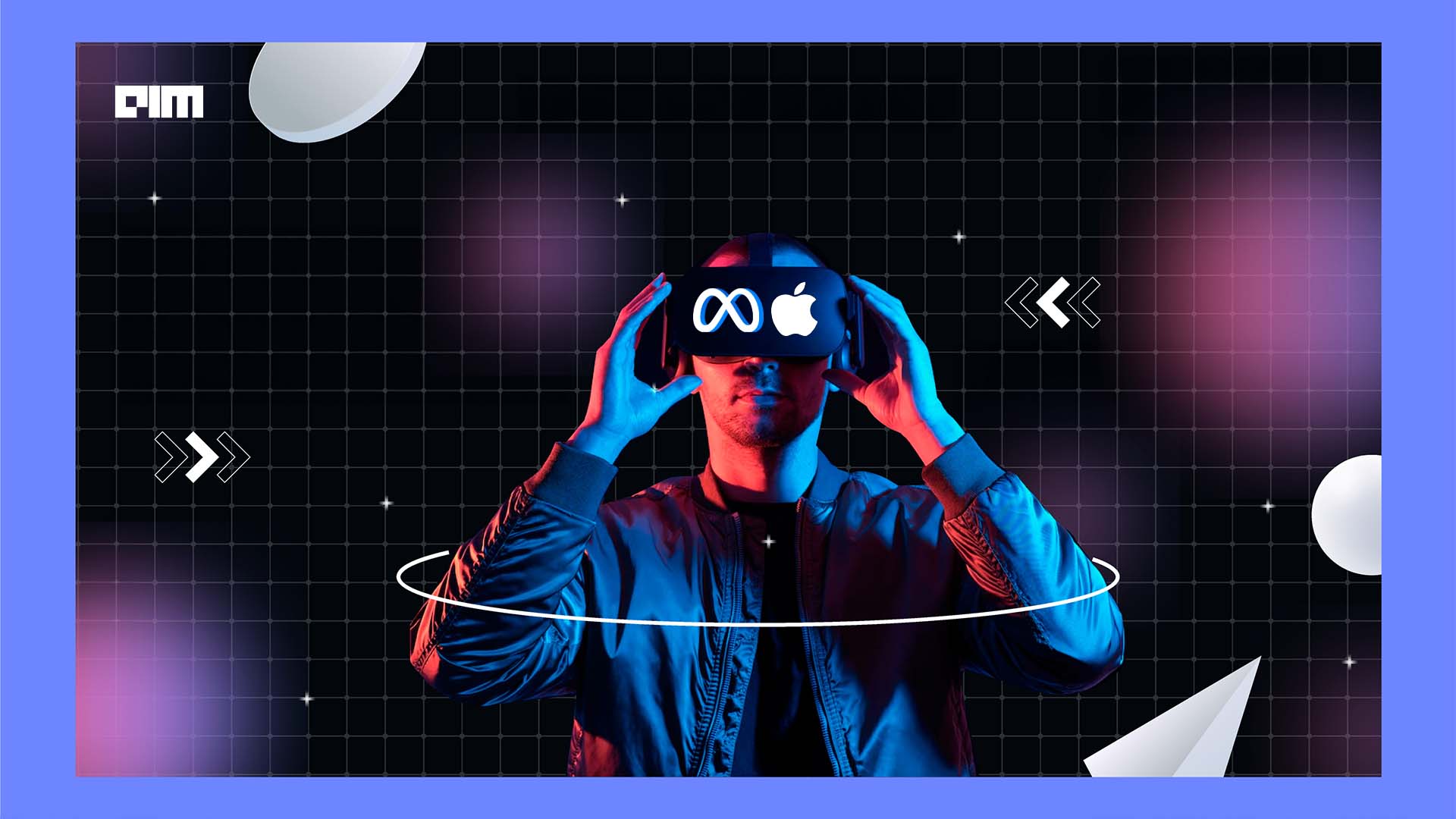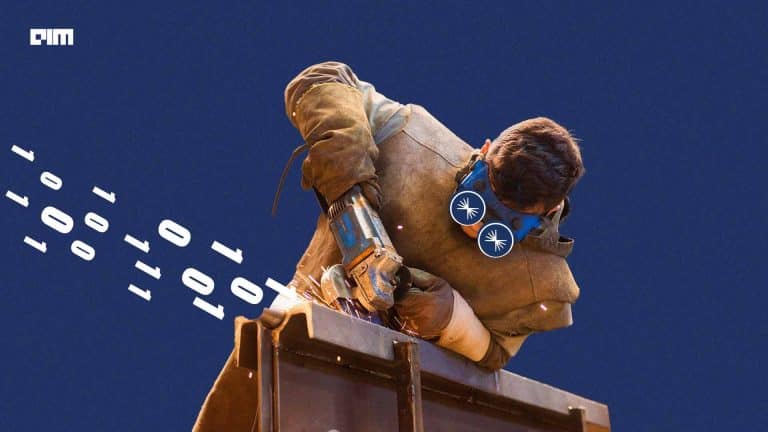|
Listen to this story
|
Yes, the metaverse is far in the tech world’s rearview by now, but Meta hasn’t let go of its pet project. Just yesterday, the tech giant released an update to its line of VR headsets with the launch of the Meta Quest 3 headset. While the billions poured into Meta’s Reality Labs division is sure to continue spawning products for the foreseeable future, it is the timing of the launch that is most surprising.
Meta has released the headset just three days before Apple’s announcement, a move that may be indicative of the tech giant’s desperation in holding on to its crown. The timing will also allow them to capitalise on the new wave of metaverse enthusiasm Apple’s headset will bring to the market. However, is piggybacking on Apple’s hype enough to keep the Zuck’s metaverse dream alive?
A Titanic Tussle for Reality
Oculus, the pioneer of the modern VR headset, has been the spearhead of Meta’s metaverse platform. However, Apple is trying to bring its ‘magic’ to the market with its new product. While the headset, tentatively named the Reality Pro, has not been officially released, leaks have given the world all the information about it.
Before delving into what Apple is offering, Meta’s competition is worth a mention. The Quest 3, priced at $499, is twice as powerful as its predecessor, the Quest 2, while being 40% thinner, thanks to the Qualcomm Snapdragon XR2 chip. In addition to these processing improvements, Meta has also improved the XR (augmented reality + virtual reality) features of the headset.
The Quest 3 boasts full-colour video passthrough mode, which will allow users to see the outside world through the cameras on the front of the device. The pill-shaped device in the middle of the device is a depth sensor, which will further increase the accuracy of tracking objects. Reportedly, the Quest 3’s display resolution is ’slightly higher’ than the resolution on the Quest 2, which caps out at around 1920 pixels per eye.
However, the improvements stop there. Meta has stated that more features of the headset will be revealed before the launch. However, the Quest 3 still does not have modern XR features like face and eye tracking. Moreover, the single depth sensor pales in comparison to what Apple has cooking.
All of what we know about Apple’s headset comes from rumours, so it is best to take them with a pinch of salt. The feature set includes XR capabilities, 4K (2160p) micro-OLED displays, eye and gesture tracking, an external battery pack to reduce bulk, and even support for the prescription lenses. The device will be powered by Apple’s signature M-series chips, and the tech giant is even expected to release a new operating system, called xrOS.
xrOS has been described as a 3D version of the iPhone’s operating system, and Apple has dedicated a ‘secret team of hundreds of employees’ working on the accompanying XR ecosystem. The M-series chips will also ‘put it on par with Macs’ and each headset will have two chips inside it. However, there is a big caveat to this dreamlike product — the Apple tax.
Reportedly, the headset will be launched at a price of $2999, which is deemed to be ‘too expensive for most consumers’. The headset also does not have a ‘killer app’, which experts believe will dissuade most users from blindly buying the headset. However, this headset is squarely aimed at the consumer market, with many predicting that it will create the Apple effect for the metaverse.
These announcements come at a time where the average consumer seems to have forgotten about VR headsets. According to people familiar with the matter, more than half of the Quest headsets stopped being put to use just six months into their purchase. However, even as the consumer XR market simmers slowly, the enterprise XR market has come to a rolling boil under the surface.
On the wrong battlefield
Meta’s metaverse was a huge failure, and it has nothing but $36 billion lost and a few hundred thousand unused VR headsets to show for it. However, this isn’t the case for competing metaverse offerings, or even competing VR headsets.
The name Magic Leap used to be synonymous with VR headsets before Oculus, as this was one of the main companies that spurred the creation of VR. The Magic Leap 2 headset is coming to market later this year, but the kicker is that it wasn’t created for consumer use, instead being targeted at the enterprise.
Lenovo, a mainstay of enterprise hardware, has also thrown its hat into the ring with the introduction of the ThinkReality VRX headset. While this headset is priced around $1,299, it has already begun shipping, beating out both Apple and Meta.
Meta learnt the hard way that people would not use headsets until they had a concrete reason to — like a killer app — but the enterprise sector already has it figured out. Use cases for VR in the enterprise range from employee safety training in emergency procedures to sales and marketing presentations where clients can explore products in 3D.
However, one of the biggest uses for VR is in industrial design, where designers can interact with virtual environments to conduct simulations on product designs. NVIDIA’s Omniverse platform got most of its momentum from design fields, with manufacturers like BMW using the platform to create ‘digital twins’ of their entire factory. While the consumer metaverse might be dead, the enterprise metaverse is just beginning to rise from the ashes.
While Apple may be positioned to pitch the Reality Pro XR to knowledge workers and those in the creative field, it’s obvious that Meta is nowhere near doing so. The company has shown no interest in enterprise use-cases, apart from fleeting mentions about virtual conferencing in VR.
Instead, Zuckerberg seems content to speak of concerts in the metaverse and users spending thousands of dollars for their virtual clothes. In a way, the Quest 3 is another step in Meta’s weak metaverse strategy. In short, the headset seems to be a sacrificial lamb of sorts, showing investors that the billions of dollars sunk into Reality Labs might actually turn into something after all.
Apple might just replicate the iPhone model with the Pro Reality XDR, revitalising a dying market into a mainstream one. However, just as the iPhone occupied and dominated the premium phone market but left space for cheaper offerings, the Pro Reality headset might be the best premium headset above $2000, leaving Meta to pick up the scraps and hopefully salvage its VR dream.

































